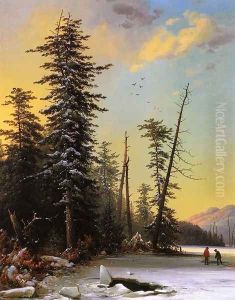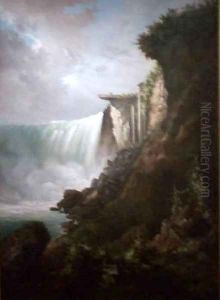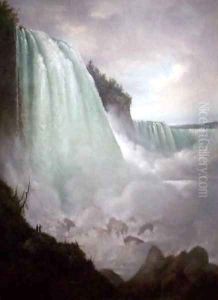Gustavus Grunewald Paintings
Gustavus Grunewald was a German-American artist known for his landscape paintings, depicting the American wilderness in a Romantic style. Born in 1805 in Hesse-Darmstadt, Germany, Grunewald received his initial artistic training in Europe. His European education imbued him with the skills and stylistic tendencies typical of the Romantic era, characterized by an emphasis on emotion and individualism as well as glorification of the past and nature.
In the 1830s, Grunewald emigrated to the United States, where he became part of the wave of European artists seeking new opportunities and inspiration in the New World. Settling in Pennsylvania, he was captivated by the vastness and untamed beauty of the American landscape, which became the central subject of his work. His paintings often portrayed the American wilderness as a sublime and divine creation, a common theme among Romantic artists of the time.
Throughout his career, Grunewald traveled extensively within the United States, capturing the diverse landscapes from the East Coast to the Midwest. His works were well received, and he participated in numerous exhibitions, gaining a reputation for his detailed and atmospheric landscapes. Despite his success, Grunewald was not as widely recognized as some of his contemporaries, such as Thomas Cole or Frederic Edwin Church, who were leading figures in the American Romantic movement known as the Hudson River School.
Grunewald continued painting and exhibiting his work until his death in 1878. Today, his paintings can be found in various art collections and museums, where they are appreciated for their historical value and artistic merit. They serve as a testament to the cross-cultural exchange between Europe and America during a pivotal time in art history and offer a window into the 19th-century American frontier as seen through the eyes of a European immigrant artist.


